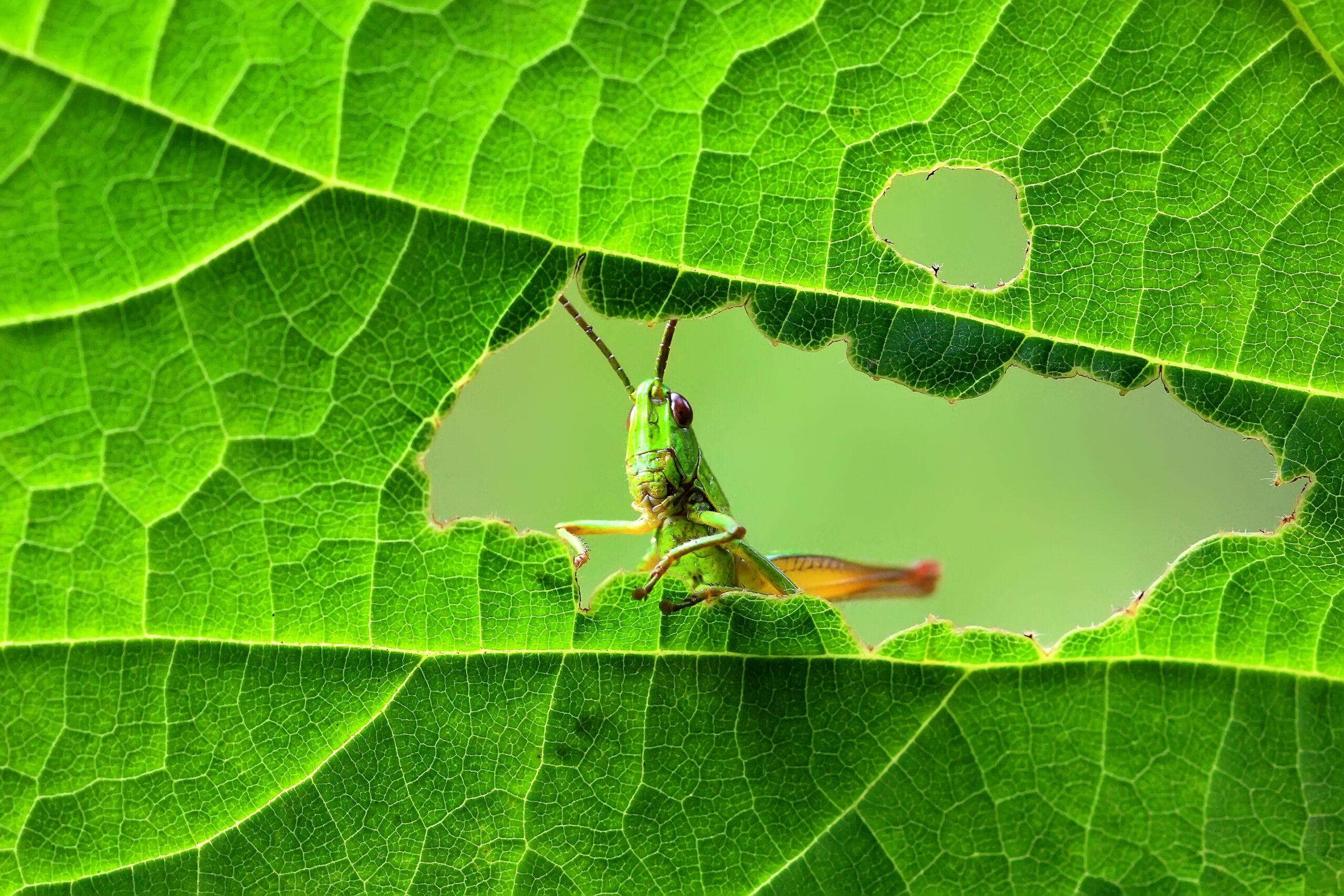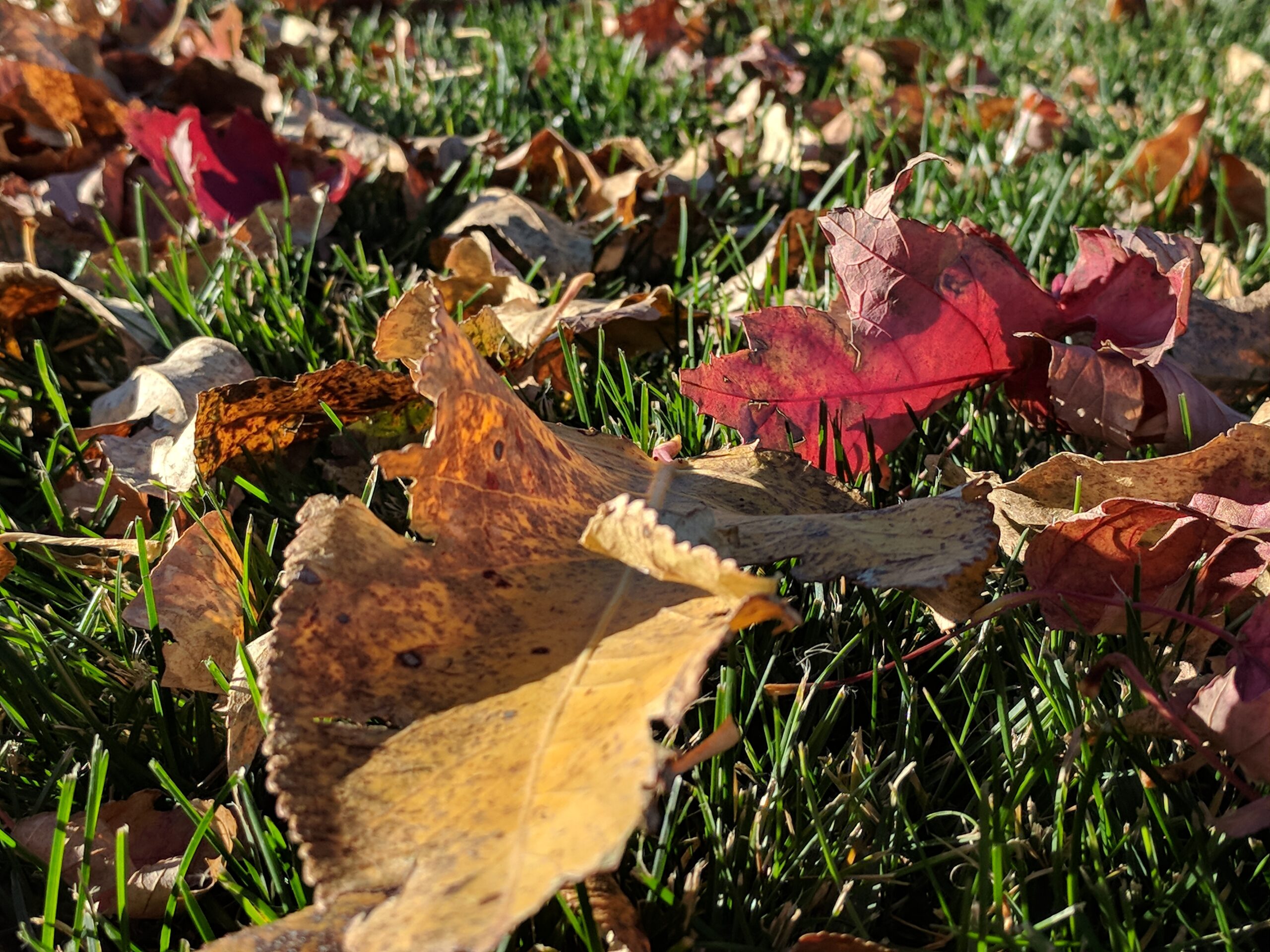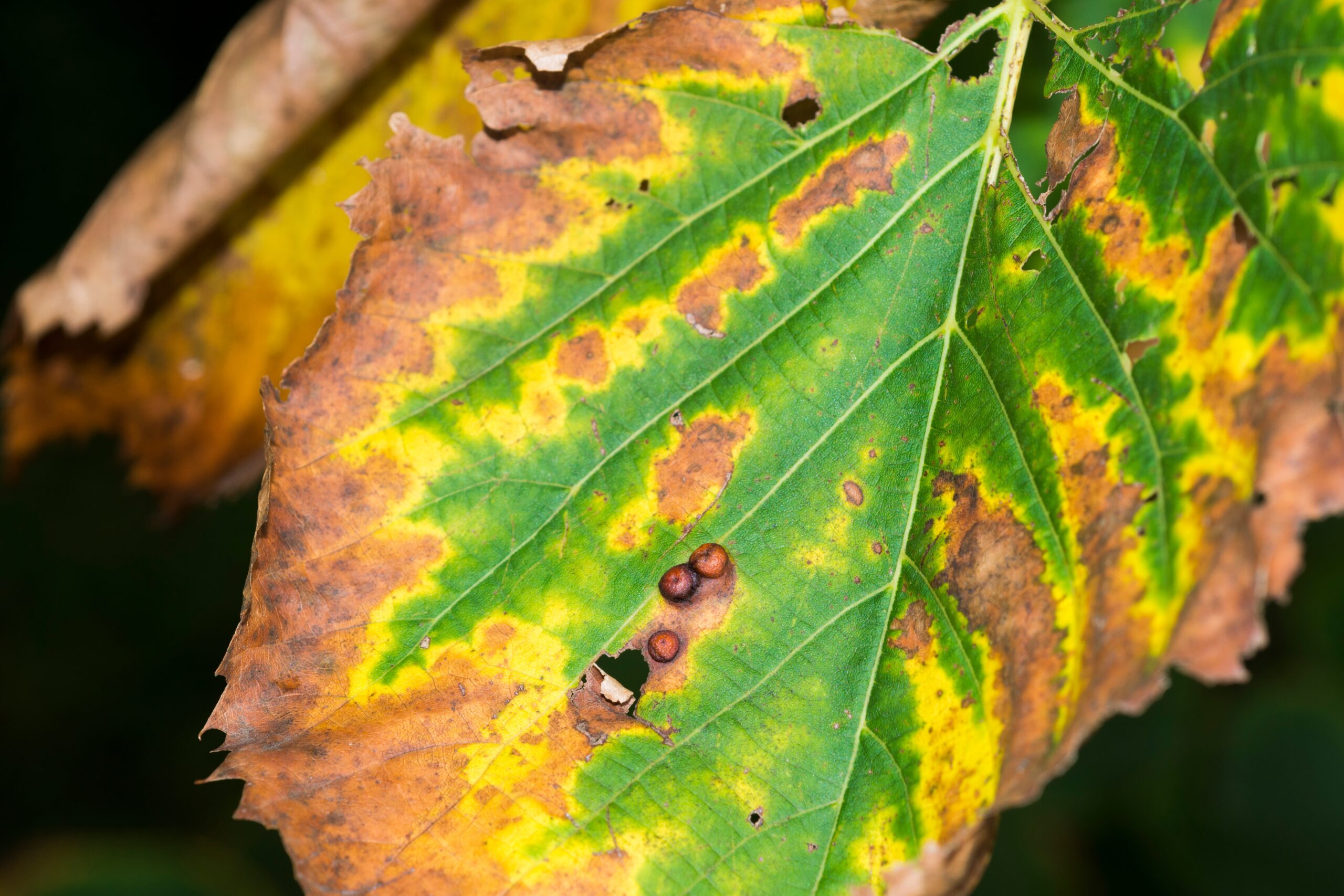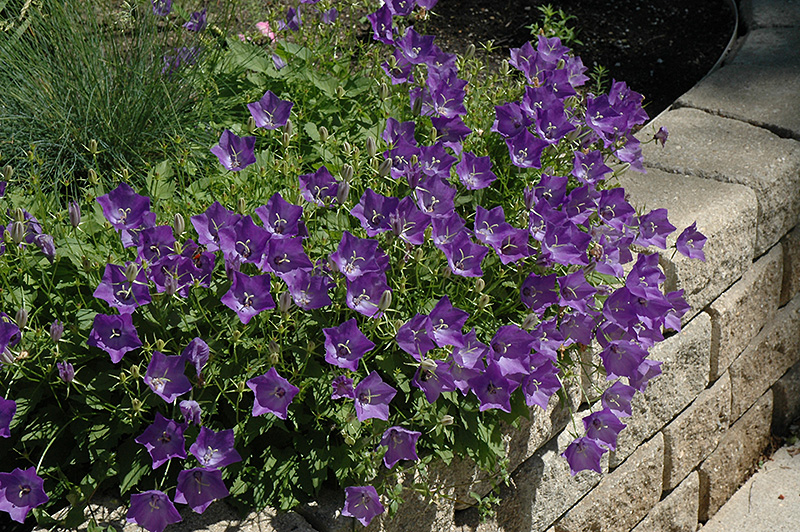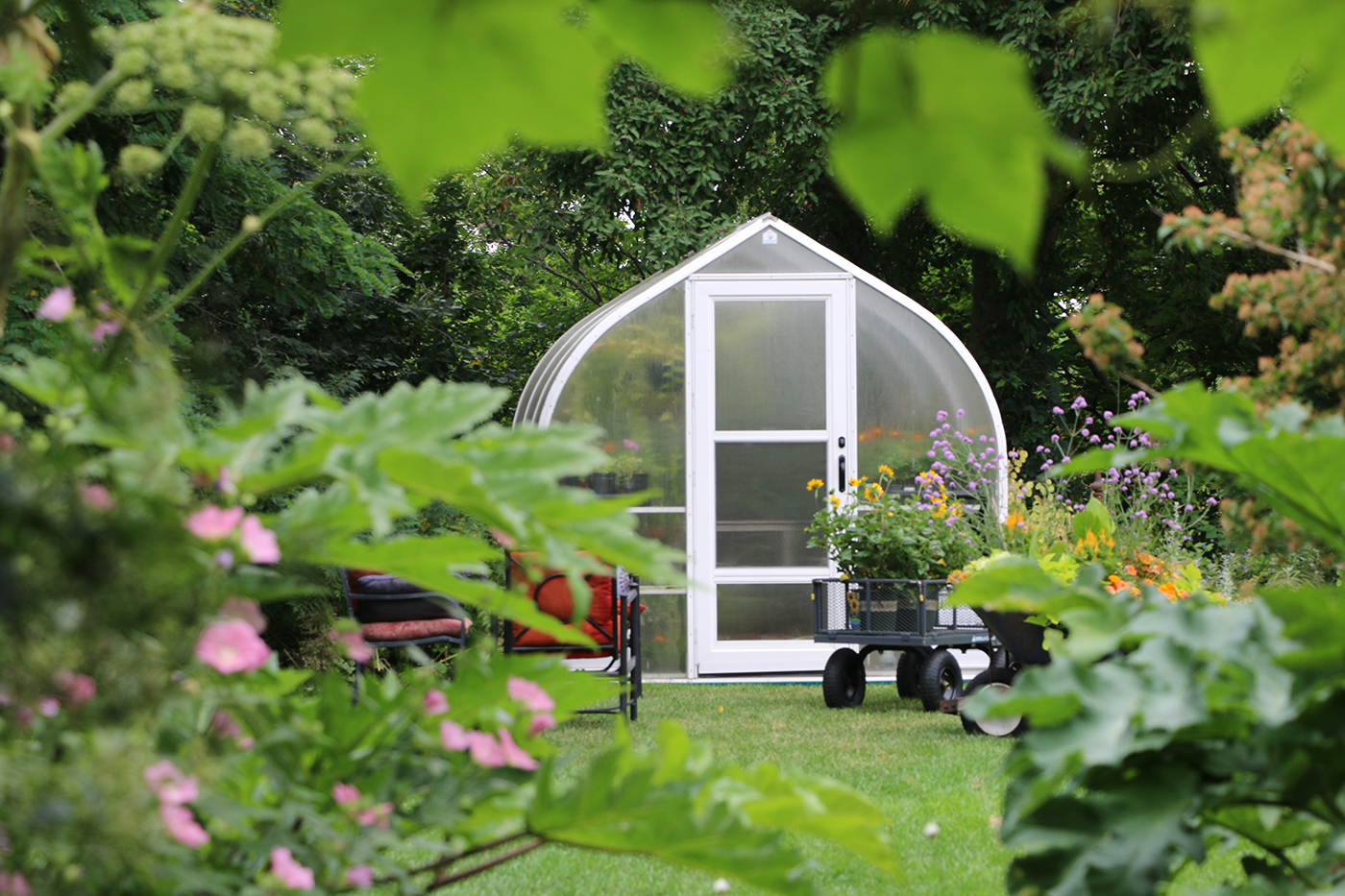I was born and raised in Colorado and have lived here all my life, but I’ve never seen a grasshopper invasion like the one plaguing the Front Range this summer! If I brush across plants that have always been critter-resistant before, I get an explosion of grasshoppers… all sizes and colors! Even some of my usually tough-as-nails yarrows are under attack. I didn’t think anything ate yarrow!
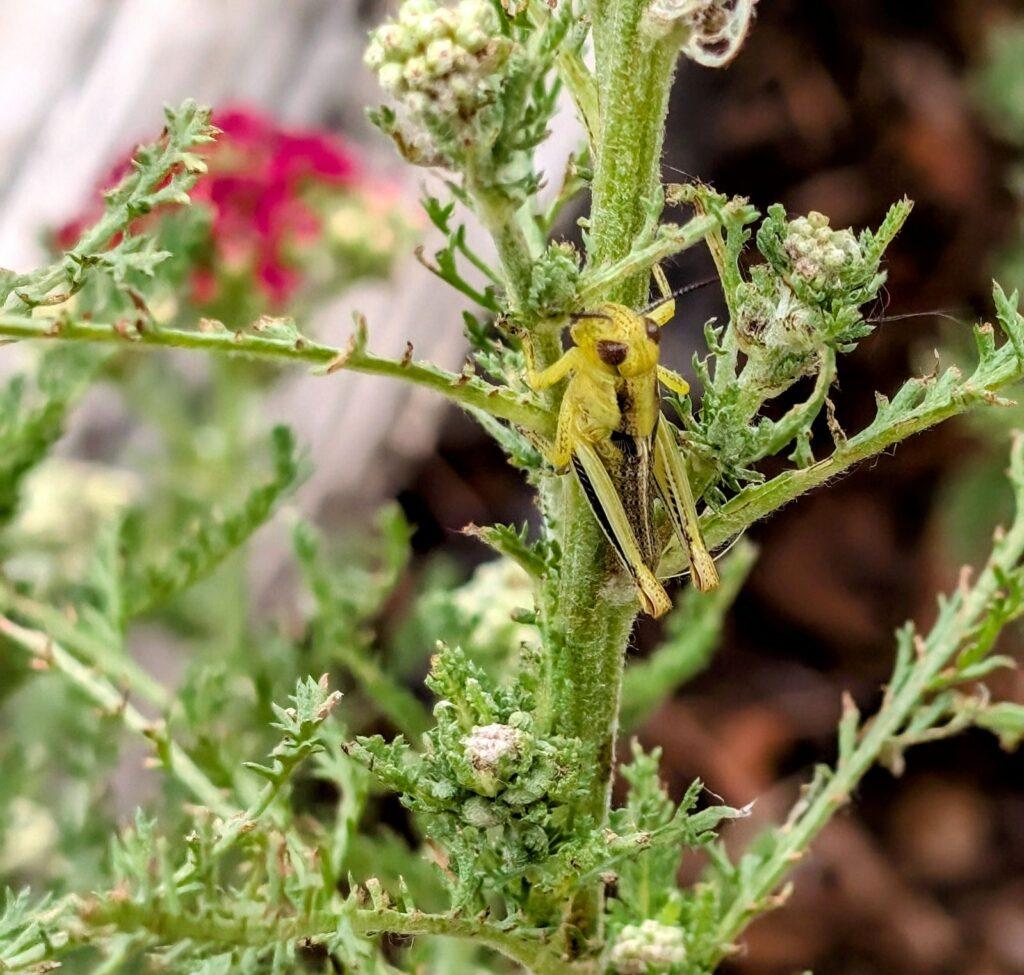
It comes as no comfort that Colorado State University describes grasshoppers as one of the most damaging insects we see and also one of the most difficult to control because they’re so mobile. I’d swear that some of the adults I was raging against today were launching six feet away in one jump!
I’m certainly not alone!
When I asked our Garden Advisors what complaints they were hearing about now, their answer was “Grasshoppers! Grasshoppers! Grasshoppers!” I get it! So what are our options?
For those of us who try to garden in the most earth-friendly ways possible, especially when it comes to pesticides, our Garden Advisors offers some choices, but no magic wands. Diatomaceous earth was their first suggestion.
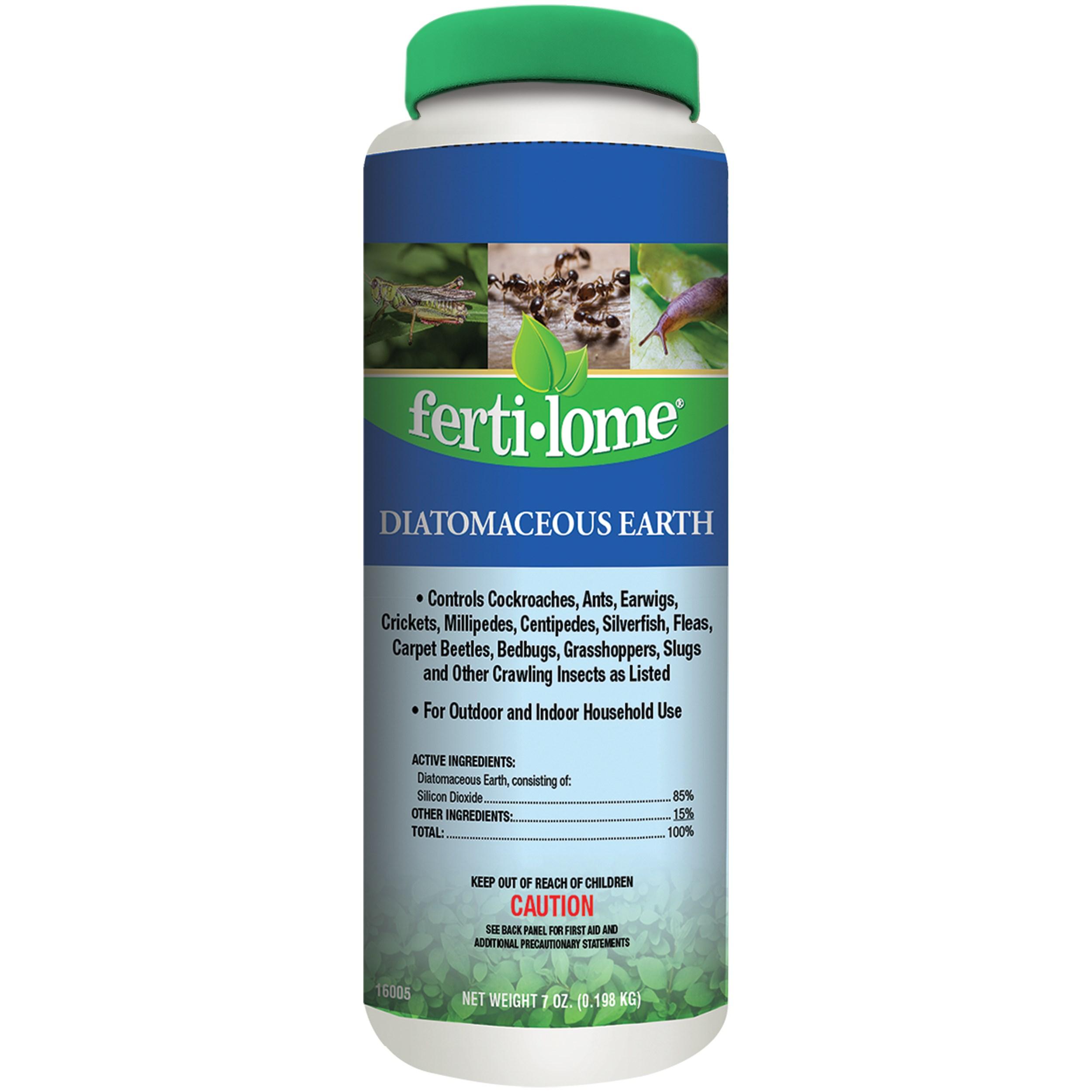
Diatomaceous earth, or D.E. for short, is a powder made from the crushed fossilized remains of microscopic sea creatures called diatoms. When certain soft-bodied insects contact the powder when it’s been dusted onto vulnerable plants, it damages their shell, their “exoskeleton. ” They dehydrate and die.
With grasshoppers, the D.E. needs to touch the insects joints and bellies to be effective. It’s works best against very young grasshoppers rather than the large adults, but it’s still worth a try now as plenty of the grasshoppers we’re seeing are still quite small. As with any pesticides mentioned in this blog, follow the package directions very carefully.
Insecticidal soap is another option
Insecticidal soap works as a contact spray against grasshoppers and damages the insects’ exoskeleton. Like D.E., it’s labeled for organic gardening.
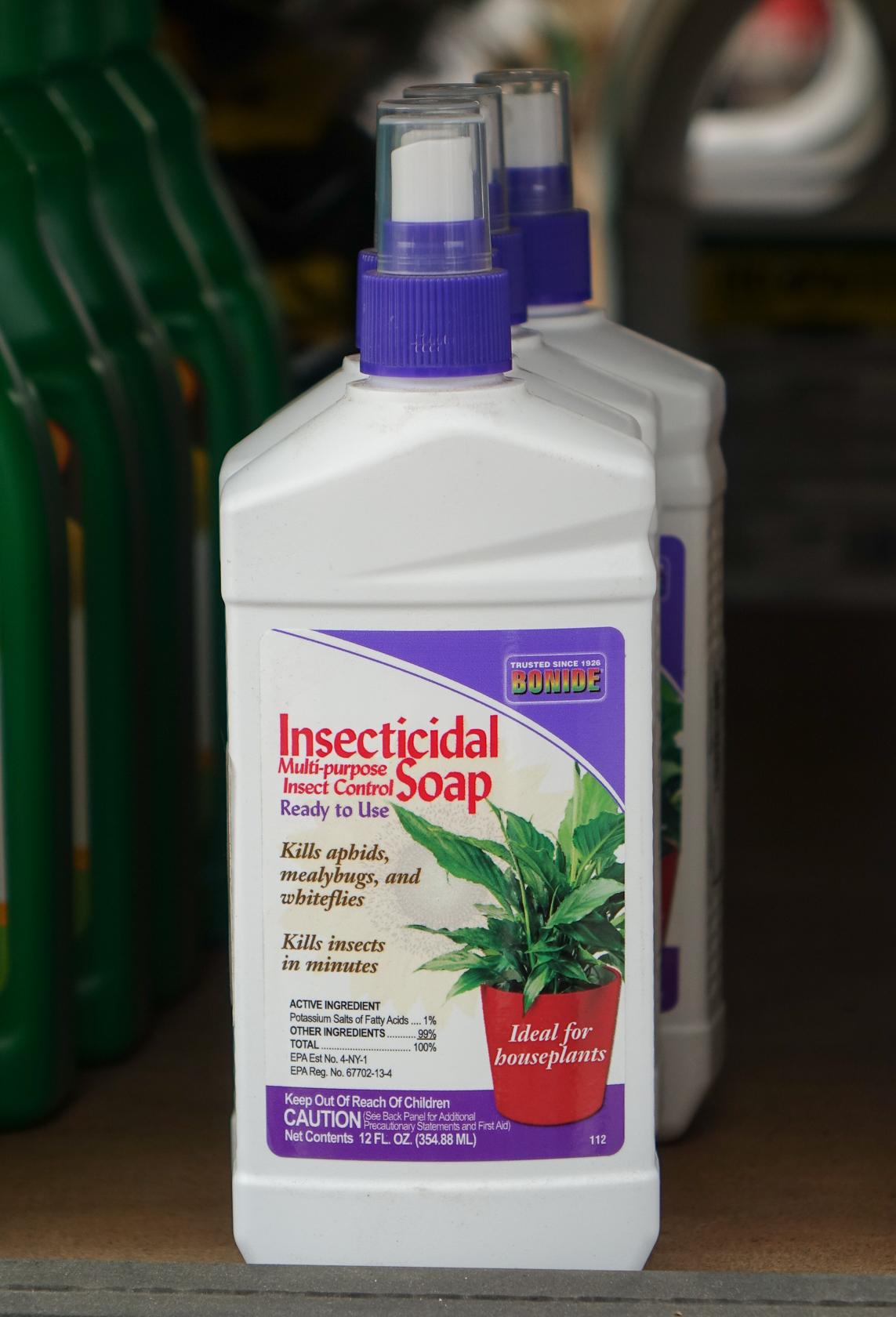
Insecticidal soap does not have any residual effect so it needs repeated applications. It also works best when the insects are small.
Physical barriers such as netting can be very effective in controlling grasshopper damage. The different types of barriers can be more labor-intensive to install but are definitely an option for the most highly-valued plants.
As if grasshoppers weren’t enough…
My friend Linda, one of Tagawa’s Garden Advisors, says she’s been getting lots of questions about blister beetles, an insect I hadn’t personally run into until a few years ago.

The blister beetle seen here had made quick work on some of my fall-blooming anemones before I spotted it and hundreds more of its relatives. You will also notice the droppings or “frass” it left behind. (Note: always keep an eye open for frass on your garden plants since it’s a great clue that you may have some unwelcome visitors.)
Blister beetles contain a nasty toxin that can cause extremely serious health problems for grazing livestock. The beetles are routinely a concern for ranchers since the insects often feed on alfalfa and other pasture grasses.
Blister beetles can find plenty to eat in our home gardens, too. Gardeners should be especially careful not to touch the insect with bare hands, even after the beetles are dead.
Fortunately, blister beetles are not nearly as difficult to treat as grasshoppers.
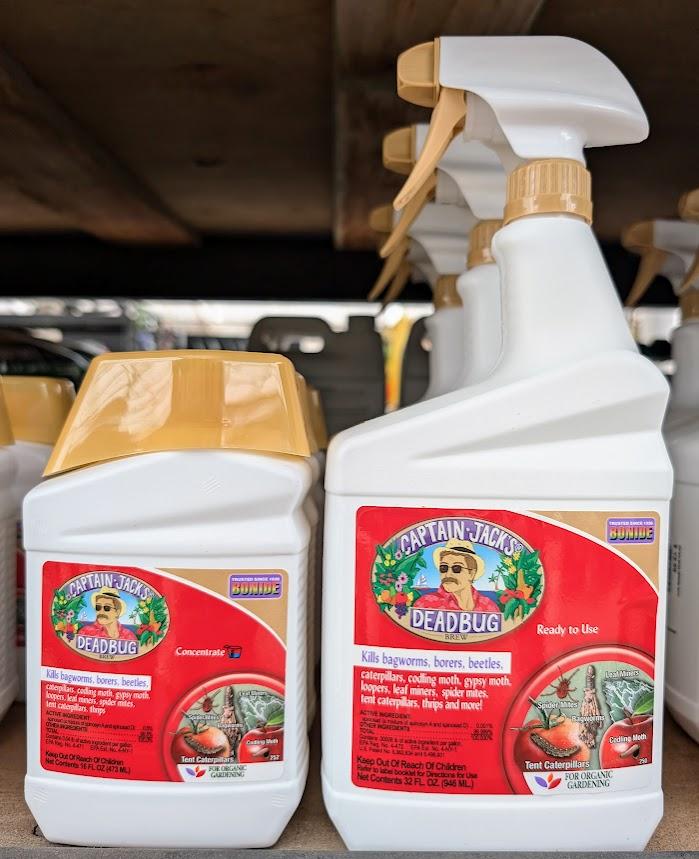
An especially interesting organic pesticide called “Captain Jack’s Deadbug Brew” can be very effective against lots of pests, including blister beetles. (What a pity it doesn’t work on grasshoppers!) Captain Jack’s does have some residual effect, but it’s best to monitor the treated area to gauge if further applications are needed. Repeated applications may be necessary. Tagawa’s carries Captain Jack’s in both a ready-to-use spray and a concentrate.
What’s that peeking through my petunia?
Oh ya. It’s a geranium budworm. Like Arnold Schwarzenegger, “They’re back!“
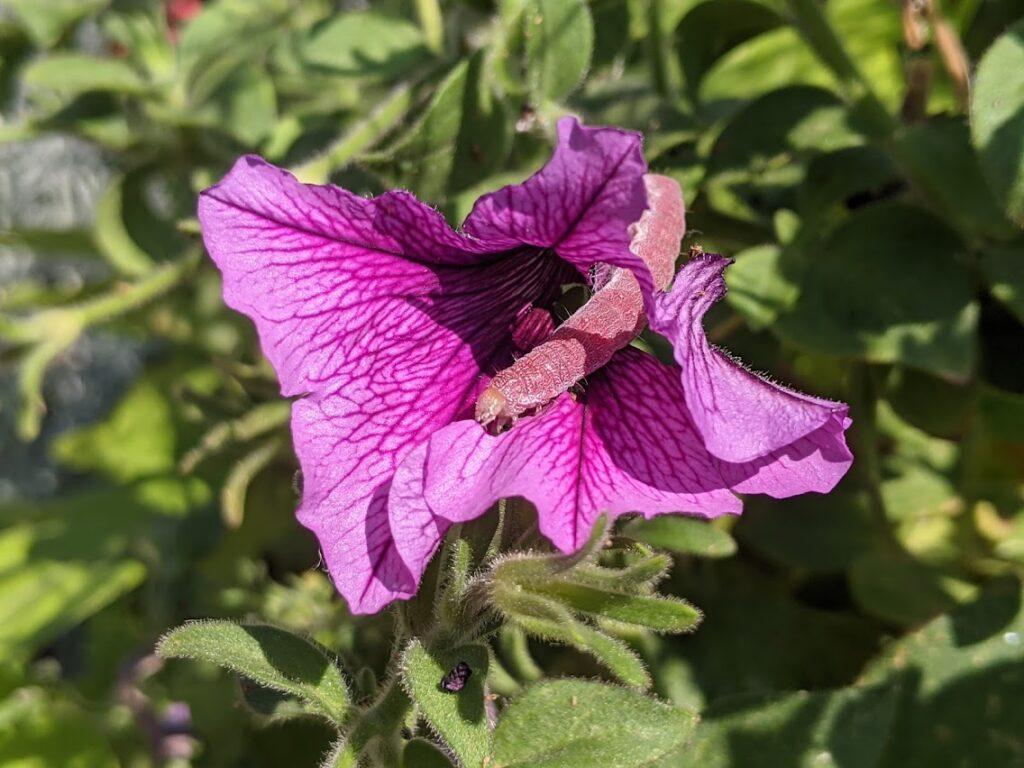
Geranium budworms can feed heavily on geraniums, as their name implies, but I have the most trouble with them on my petunias and calibrachoas. They generally feed at night, so I was a bit surprised to find this well-fed visitor in the middle of the day. Note the camouflage: pink budworm, pink petal. Their presence became painfully obvious when I realized that big chunks of the flower petals were missing. With geraniums, the budworms will leave tiny holes in the buds before the flowers even open.
But there’s good news! An organic pesticide that affects only caterpillars (and never anything that eats them) can stop the budworms right in their tracks.
The scientific name for this pesticide is bacillus thuringiensis or “Bt” for short. It’s also available under the trade name of “Thuricide.” Tagawa’s carries both products.
Bt contains a bacteria that targets only caterpillars. The bacteria is toxic once it eats any buds or flowers that have been treated. The budworms stop feeding almost immediately and die within a day or two.
It’s not always about damaging insects
Ever heard the term “leaf scorch?” The Garden Advisors are currently getting an earful about it from our guests!

Leaf scorch happens when a plant’s root system simply isn’t big enough or strong enough to deliver water to the farthest points of a tree or shrub, i.e, the edges of the leaves. Conditions like the hot, dry and windy weather we’ve been having along the Front Range can trigger the issue. New trees and shrubs are especially vulnerable.
The answer is not to start over-watering plants showing symptoms of scorch. Soggy soil will only make matters worse, challenging the root system that much more. Instead, water the plants appropriately: water them deeply, but then let the top few inches of soil dry out before they’re watered deeply once again. Mulch can also help reduce water loss on younger trees and shrubs.
Don’t forget to winter water! Roots that dry out and die over the winter seriously damage the entire root system’s ability to deliver enough water once the weather turns hot again. Tagawa’s Garden Advisors will gladly walk you through the best ways to make your winter watering count.
And as for those ugly patches on your tomatoes…
Like the budworms, “blossom end rot” or B.E.R., is back. Again, we can’t blame the insects for this problem.
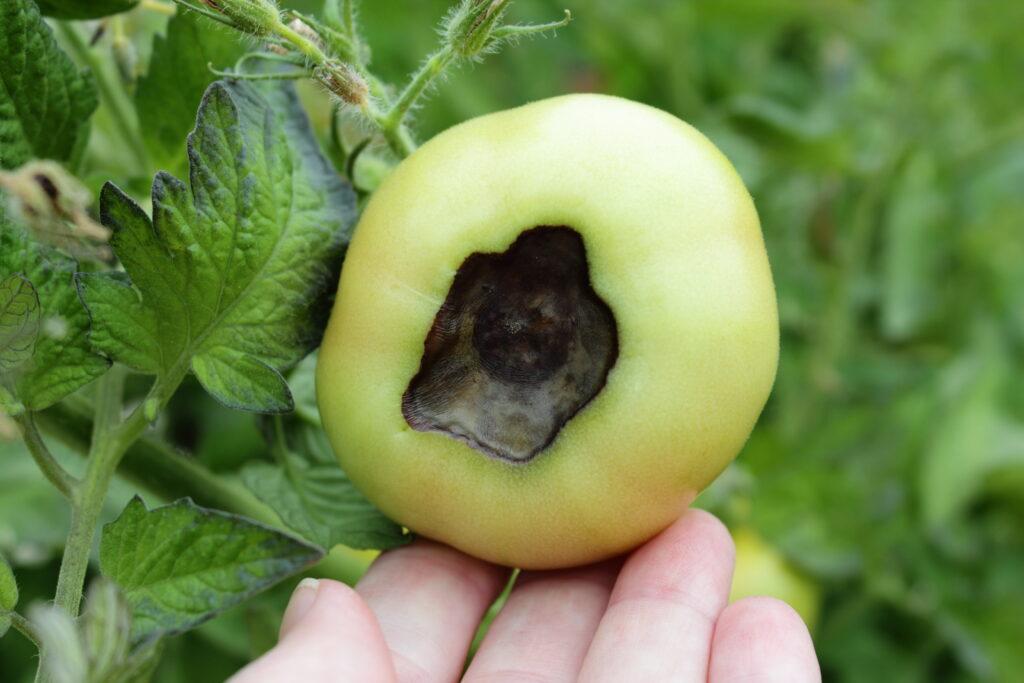
B.E.R. is a cultural condition, meaning that something’s gone wrong as the plant is beginning to set fruit. The most common contributor is inconsistent moisture, when the plant’s entire root system swings from wet to dry.
The problem isn’t limited to tomatoes. Peppers, squash, and eggplant along with pumpkins, cucumbers and melons can also be affected.
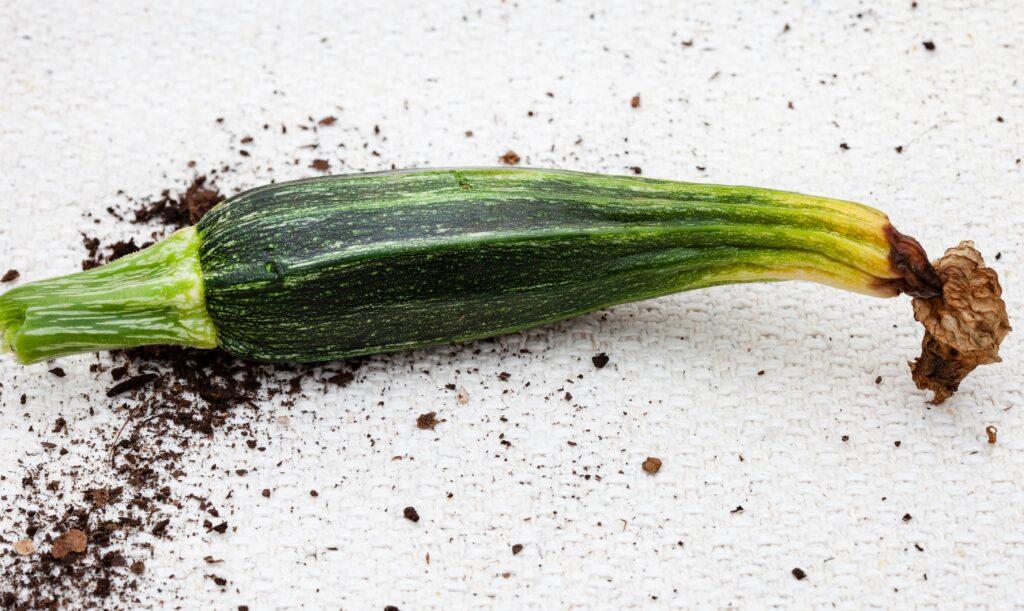
Certain plants need adequate calcium to form healthy fruit. Most of our soils have enough calcium, but that wet/dry cycle “locks up” the mineral, the plants can’t metabolize it properly, and it shows up as sunken, papery blotches on the bottom or “blossom end” of the fruit.
The best and easiest way to avoid blossom end rot is to make sure all of the susceptible plants are watered consistently. Not overwatered, which can cause the same issue, but watered properly and evenly.

If you’d like to go the extra mile to make sure your tomato and veggie roots have access to enough calcium, our Garden Advisors suggest using “Tomato-tone” fertilizer. Use as directed!
In a summer plagued with hoards of grasshoppers, we deserve all of the home-grown tomatoes we can get, right? Good luck!
